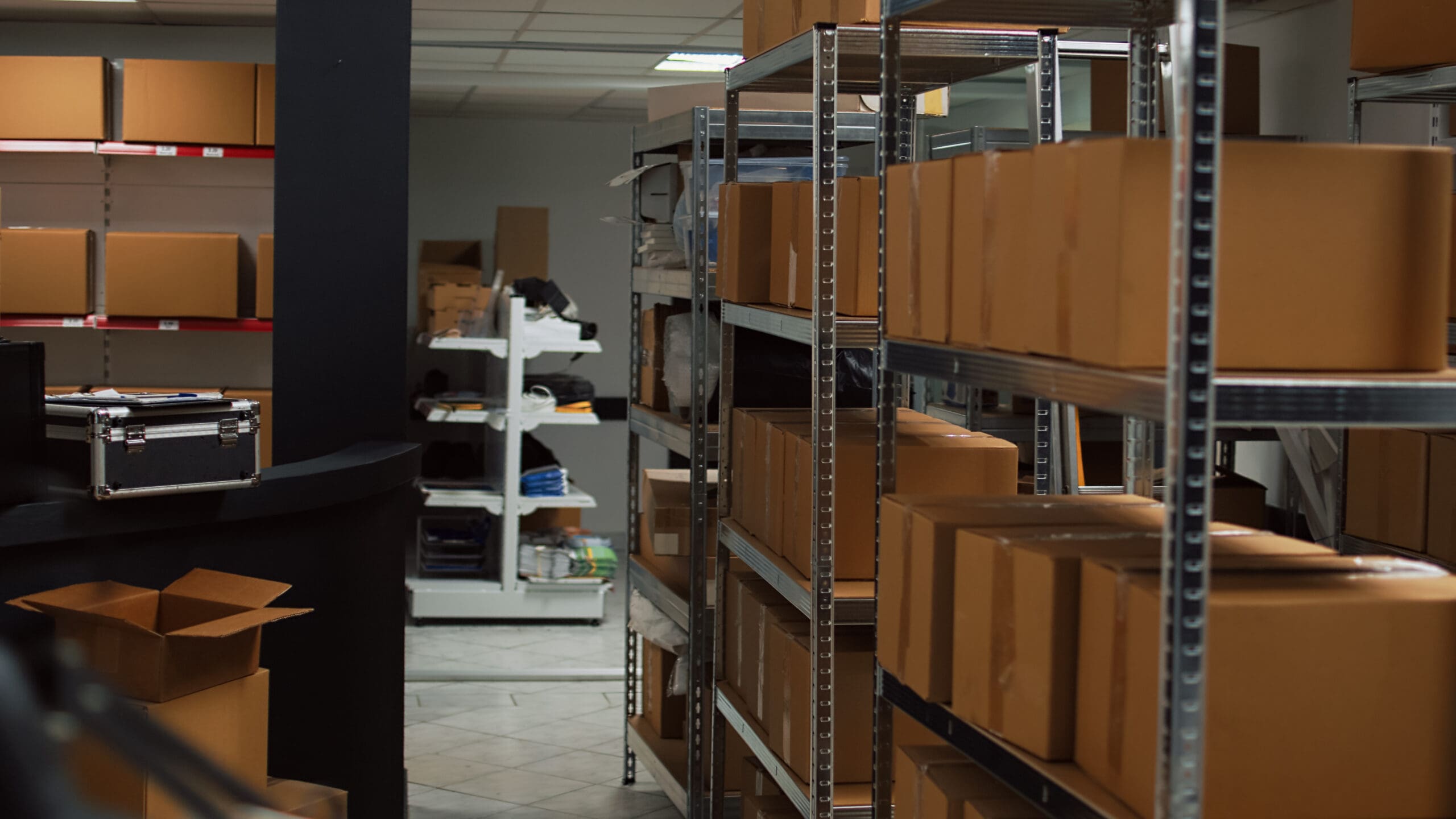Not having enough cash on hand can hurt any kind of business. Even the most successful businesses are known to encounter a shortage of cash due to unforeseen circumstances. Business owners then turn to bank loans, lines of credit, or credit cards to cover their day-to-day operations. However, defaulting on these loans can severely impact a business’ credit score. Fortunately, if your business mainly deals with the sale of tangible goods, an inventory financing loan may help cover short-term needs with little risk.
What is inventory financing?
Inventory financing is a form of asset-based lending that enables businesses to pledge their inventory as collateral to be able to obtain a term loan or a line of credit. Through inventory financing, a business experiencing poor cash flow can acquire a much-needed cash injection to cover outgoing cash flow instead of waiting for inventory to be sold. The difference, however, is that a term loan involves a one-time payment while a line of credit can be accessed, paid, and accessed again as long as the borrower consistently pays the amount that they have borrowed.
When it comes to inventory financing, it’s important to bear in mind that your loan does not solely rely on the value of your assets. Rather, it depends on the loan-to-value (LTV) ratio set by your potential lender. An asset’s LTV is calculated by dividing the amount borrowed by the appraised value of the property being put up as collateral. As a rule of thumb, most lenders set an LTV of 50% to inventories pledged as collateral. This means that it is highly unlikely that you would get the full appraised value of your inventory when you apply for inventory financing loans.
What are the different types of inventory financing?
In this section, we’ll talk about the two main types of inventory funding to determine which one best fits your business’ current financial requirements.
What is an inventory loan?
This type of inventory funding is characterized as a short-term loan that businesses use to purchase additional inventory. An inventory loan comes in the form of an upfront lump sum that businesses have to pay based on the payment terms set by the lender. Businesses experiencing rapid growth and an increase in market demand should consider an inventory loan as it is often easier to acquire as opposed to other kinds of loans. However, business owners must remember that an inventory loan is often used as a short-term solution.
Compared to other business loans, inventory loans are repaid over a shorter period meaning larger monthly payments. Another downside of an inventory loan is that it’s a one-time payment. If you need another loan, you would have to go through the application process again.
What is an inventory line of credit?
Like other lines of credit, an inventory line of credit can be accessed by businesses to buy the inventory they need when they need it. A line of credit’s repayment terms differ from a term loan as you only pay interest on the amount that you have borrowed and not the total amount available. What sets an inventory line of credit apart from an inventory loan is when used properly, a business will be able to manage its cash flow better and reinvest the additional capital back into the business. But, like an inventory term loan, an inventory line of credit typically has interest rates that are much higher compared to other more traditional loans.
The Benefits and Drawbacks of Inventory Financing
As with any important financial decision, business owners must understand the different advantages and disadvantages of inventory financing for you to make an informed decision. Let’s talk about the pros and cons of inventory funding.
Inventory Financing Benefits
- An inventory financing loan could be a short-term solution for a business’ cash flow problems.
- Businesses can use inventory financing loans to expand product lines.
- An inventory financing loan allows a business to stock up on inventory – getting ahead of potential inventory issues.
- May be easier to qualify for since an inventory financing loan requires a borrower to pledge collateral.
Inventory Financing Drawbacks
- An inventory financing loan requires an extensive due diligence process which can be as expensive as it is time-consuming.
- Depending on the lender, an inventory financing loan may have high interest rates and high loan minimums.
- Inventory loans can only be used to buy additional inventory and cannot be used for other purposes. For instance, you cannot use an inventory financing loan to consolidate debt, pay your employees, or cover other cash flow needs.
- An inventory loan is collateralized by your inventory – this means that the lender can seize your inventory in case you default on the loan.
Who can use inventory financing?
Inventory financing, as the name implies, can be used by businesses that deal with tangible products. These include retail stores, wholesalers, distributors, and manufacturing companies that experience high inventory turnover rate. For a business to enjoy the myriad of inventory financing benefits, they must first meet the following criteria:
- Must be operational for at least one year
- Must be a product-based business with a reliable inventory management system
- Must provide relevant and accurate financial statements
- Must prove that the business is profitable
- Must provide credit history and scores
Is inventory financing right for your business?
As the business owner, you would be the best person to gauge whether or not acquiring an inventory business loan would help meet your business goals. In general, inventory financing loans are sought after by small to medium-sized businesses that have exhausted other options to acquire additional funding. Larger companies with an established financial history would be better off with traditional bank loans that offer more favorable repayment terms as opposed to an inventory financing loan. Remember, the loan you’re applying for should depend on the type of business you have and what you’re looking for to accomplish.
Are there other alternatives?
Insufficient capital is one of the many roadblocks that business owners face when running a business. The great news is, depending on your business’ qualifications, you may be eligible for other types of financing that may be more favorable for your current financial requirements. Let’s check out some of the alternatives to inventory financing.
- Traditional term loans – A term loan is a funding option offered by financial institutions such as banks, credit unions, and online lenders. What makes term loans popular is their predictable monthly costs as businesses can borrow a fixed amount of money and pay it back with interest over a set period of time. While it’s available to both start-ups and established businesses, term loans may be more difficult for small businesses to acquire if you have bad credit or poor cash flow.
- Traditional lines of credit – Like term loans, traditional lines of credit are also offered by banks, credit unions, and online lenders. The great thing about this type of funding is that a revolving line of credit can be accessed and repaid either immediately or over time. Payment is also straightforward as you only pay interest on the amount that you take out rather than the whole available amount.
- Business credit cards – While it’s true that this kind of financing may be easier to qualify for compared to other traditional financing options, business credit cards do not have the most flexible payment terms. The biggest advantage that credit cards have is that every purchase helps the borrower earn rewards, points, or cash back depending on the type of credit card that they have.
- Angel investors – Angel investors are high-income individuals that provide the necessary funding for businesses in exchange for an ownership stake in a company. These individuals typically invest in a startup during its early stages – using their own money.
- Crowdfunding – Crowdfunding is a relatively new method used by businesses, organizations, or even individuals to fund a business idea or an expansion project. Crowdfunding asks a large number of people, often friends, family, customers, and the general public, to donate their own money during a set period of time. Once the goal amount is met, businesses can take out the amount raised and use it however they want. If you’re interested in financing your inventory through crowdfunding, consider using Kickfurther.
How does Kickfurther help small businesses finance their inventory?
Kickfurther is a unique crowdfunding platform that helps businesses grow their inventory through fundraising efforts backed by the public. It is the first crowdfunded marketplace with the main objective of financing a company’s inventory needs. Kickfurther enables a larger and more cost-effective inventory production by enabling a true consignment inventory from people that support and believe in your brand and your product. If you think Kickfurther is the right financing option for you, learn more about their services by visiting www.kickfurther.com.
Key Takeaway
An inventory financing loan, if used properly, can be a great way to cover your business’ short-term funding needs. Make sure to shop around and study the different loan amounts and interest rates that you are able to qualify for to determine which type of loan makes the most financial sense for you and your business.









